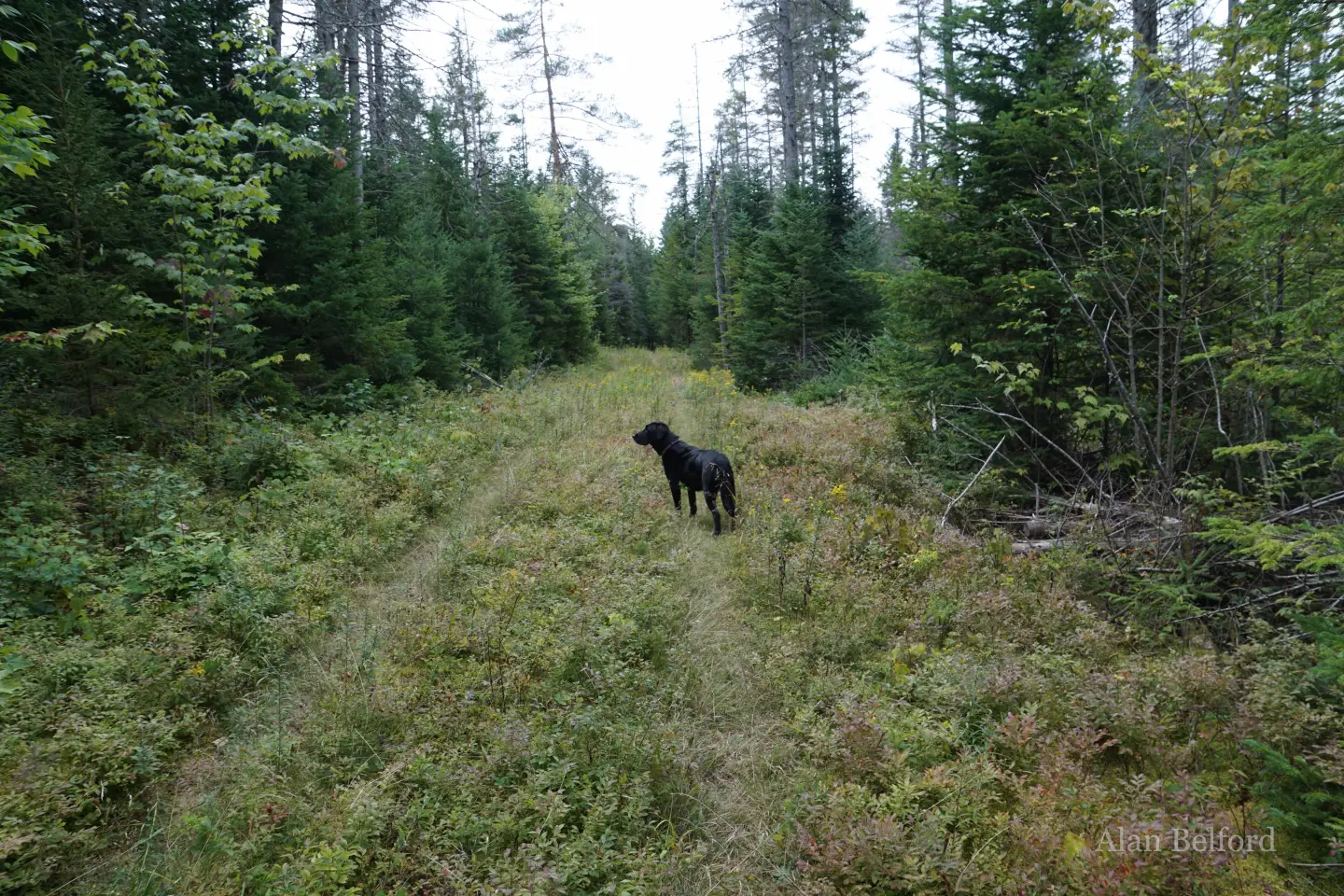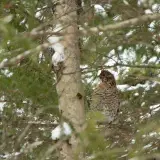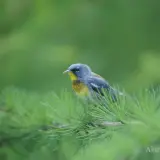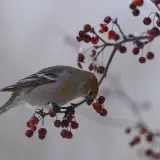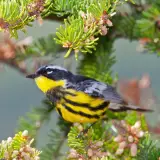A summer morning
It was a warm, drippy, and muggy morning when I stepped onto the Roosevelt Truck Trail off Route 28N the other week. The trail – actually a grassy two-track — is a relatively easy hike for birders in search of boreal species, which is precisely why I was there. The rolling trail (reached 1.6 miles from the Boreas River Bridge and 3.7 miles south of the junction of 28N and Blue Ridge Road) initially rose through a mixed forest and I started my day’s list with Magnolia Warblers which seemed to be the most vocal of the warblers I found on the late summer day. I would soon add the likes of Nashville, Black-throated Blue, Black-throated Green, Black-and-white, Canada, and Northern Parula, along with quite a few others. 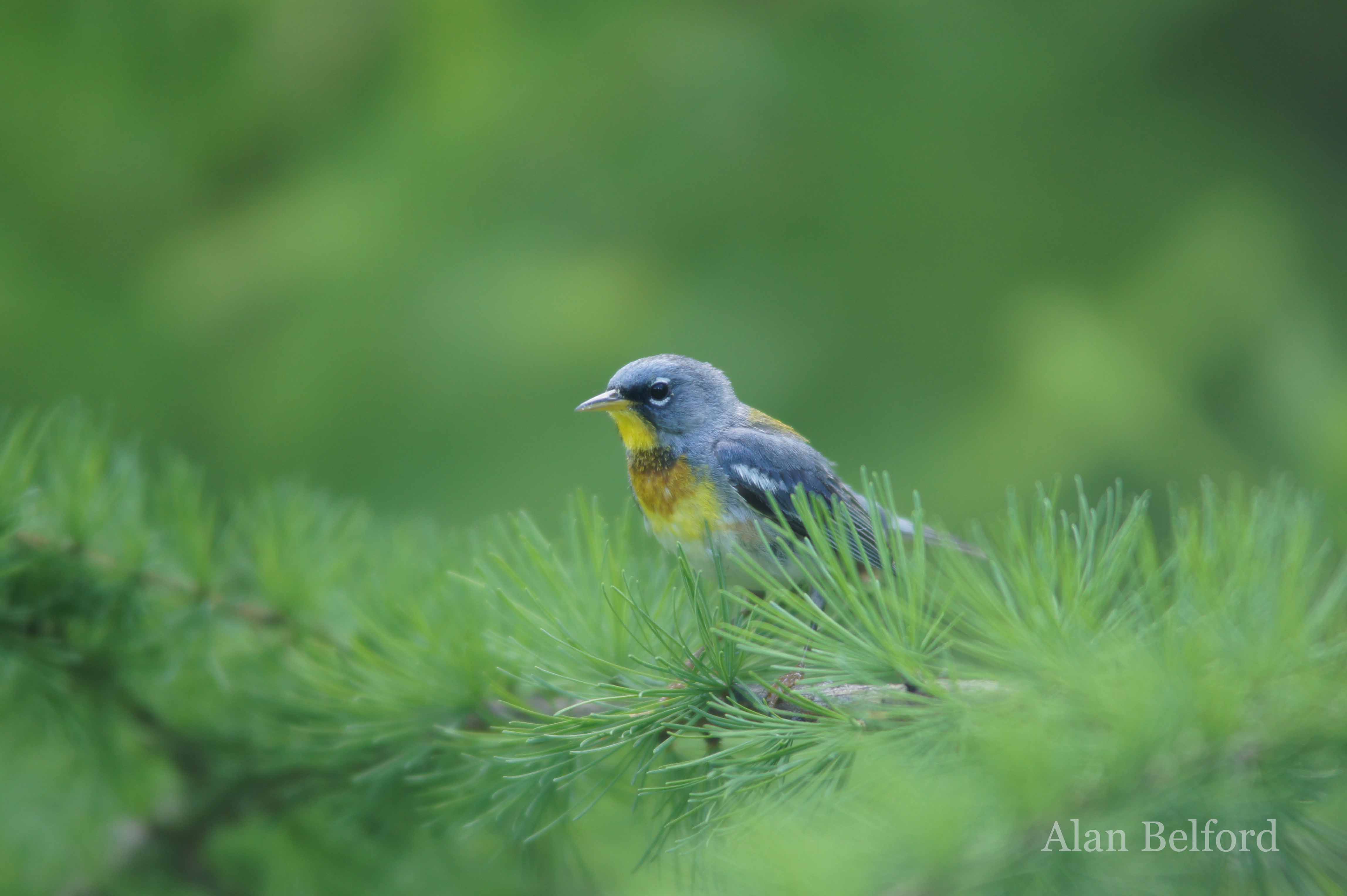
Such a list is no surprise, as the truck trail is excellent for a wide variety of warblers, and it has even hosted Cape May Warblers during the summer, suggesting that they nest there. But it is perhaps more famous as a place to find boreal birds, and I have found species like Canada Jay and Boreal Chickadee there in the past. During this hike – which lasted a few hours – I didn’t note either of those species, but I kept encountering Black-backed Woodpeckers throughout my time; the coniferous woods are excellent for them.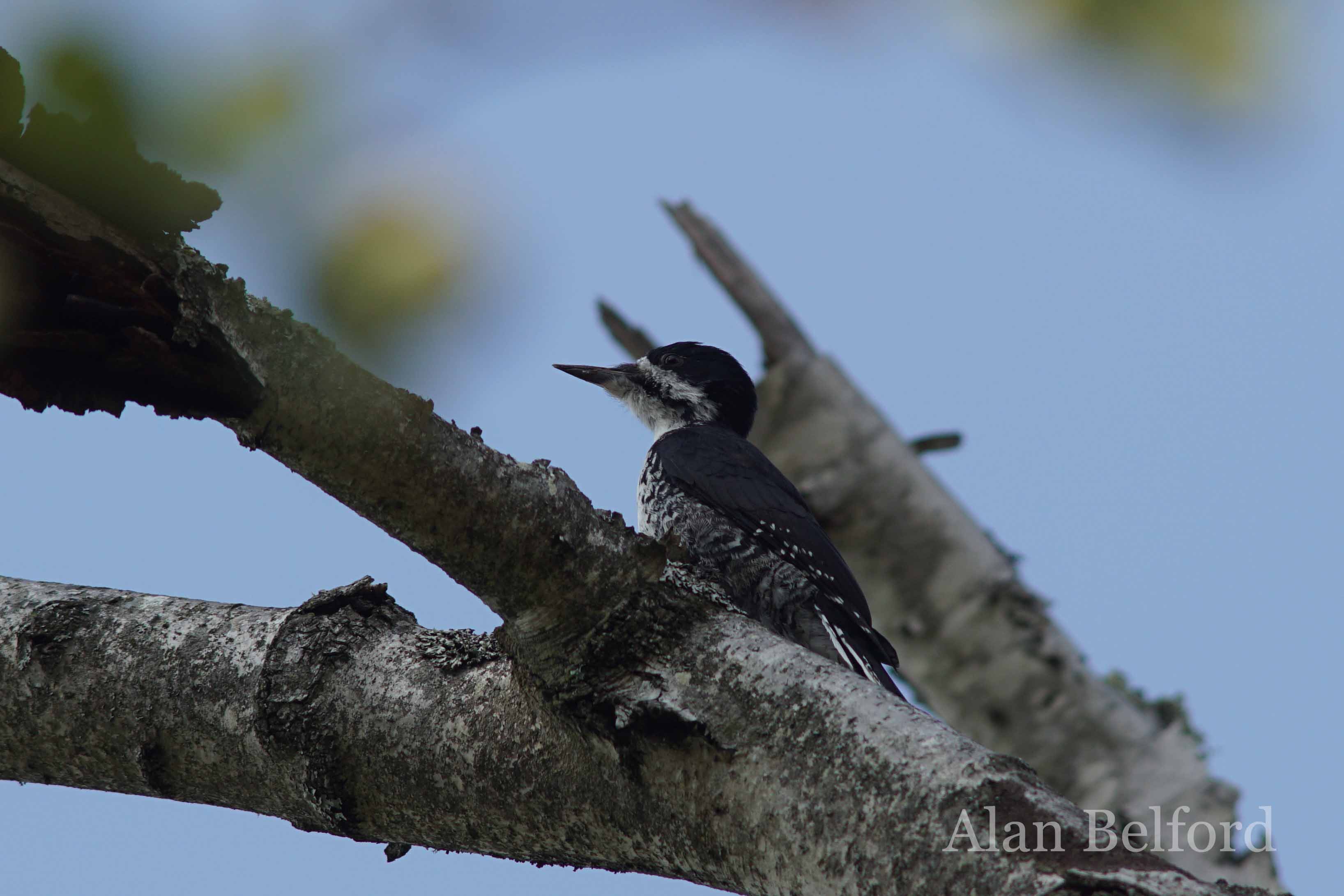
Plenty of birds
The first Black-backed I saw was in a stand of dead trees (they love them!), and the surrounding woods and brushy understory were full of chattering Black-capped Chickadees, Golden-crowned Kinglets, White-throated Sparrows, Least Flycatchers, and a collection of warblers – such mixed-species flocks are a highlight of any trip during the second half of summer. The flock also held a few Hermit and Swainson’s Thrushes, the songs and calls of which are some of my favorites, leading me along the trail all morning.
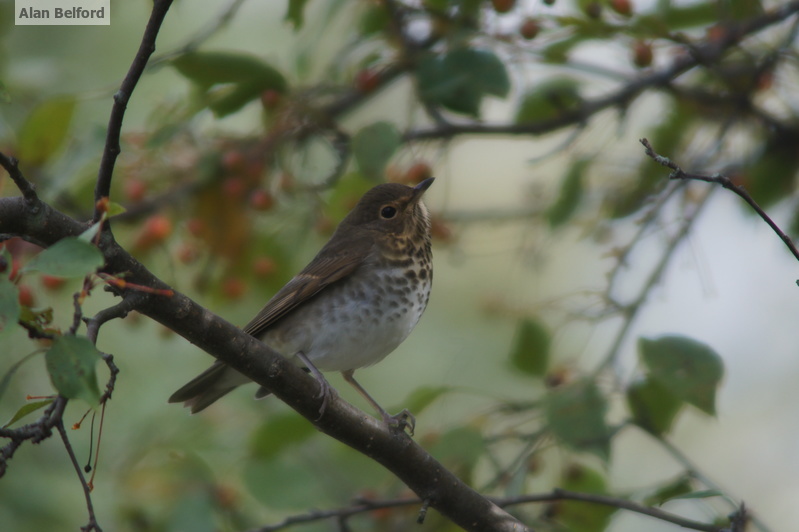
Above the trees, I was also led along my route by the flight calls of Purple Finches and Red Crossbills; the truck trail is a good place to look for crossbills when our cone crop is growing, as it has been this summer. Now and then I’d stop to "spish" or give a Barred Owl call in order to spark the surrounding woods to life – soliciting the scolding calls of Red-eyed and Blue-headed Vireos or receiving the ire of Red-breasted Nuthatches and Yellow-bellied Sapsuckers. It is a common technique I use, particularly during the latter half of summer as nesting finishes and song dies down.
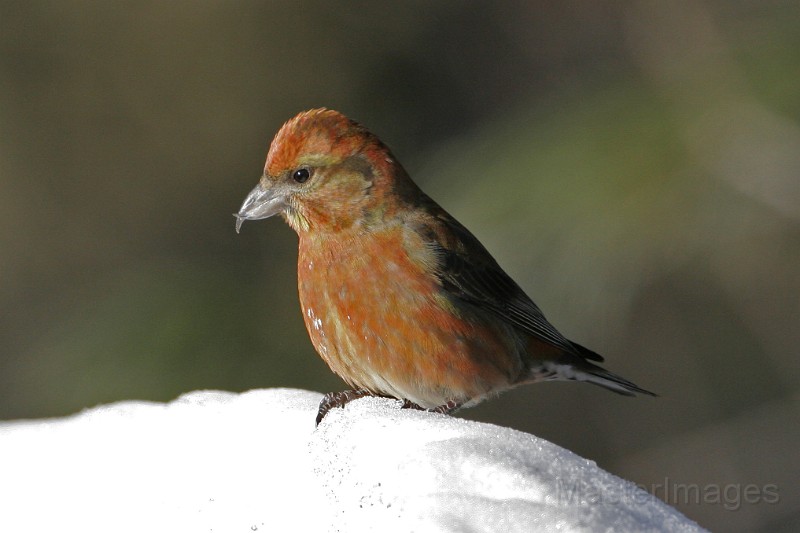
But while the drop-off of song does make some species more difficult to find, I enjoy the challenge of pursuing them and the surprise of finding them when they aren’t as obvious as they were earlier in the summer. And late summer is also an excellent time of year to add some botanizing to my hikes, and so as the day began to hush I started to check out the wildflowers sprouting up in the grassy places along the route.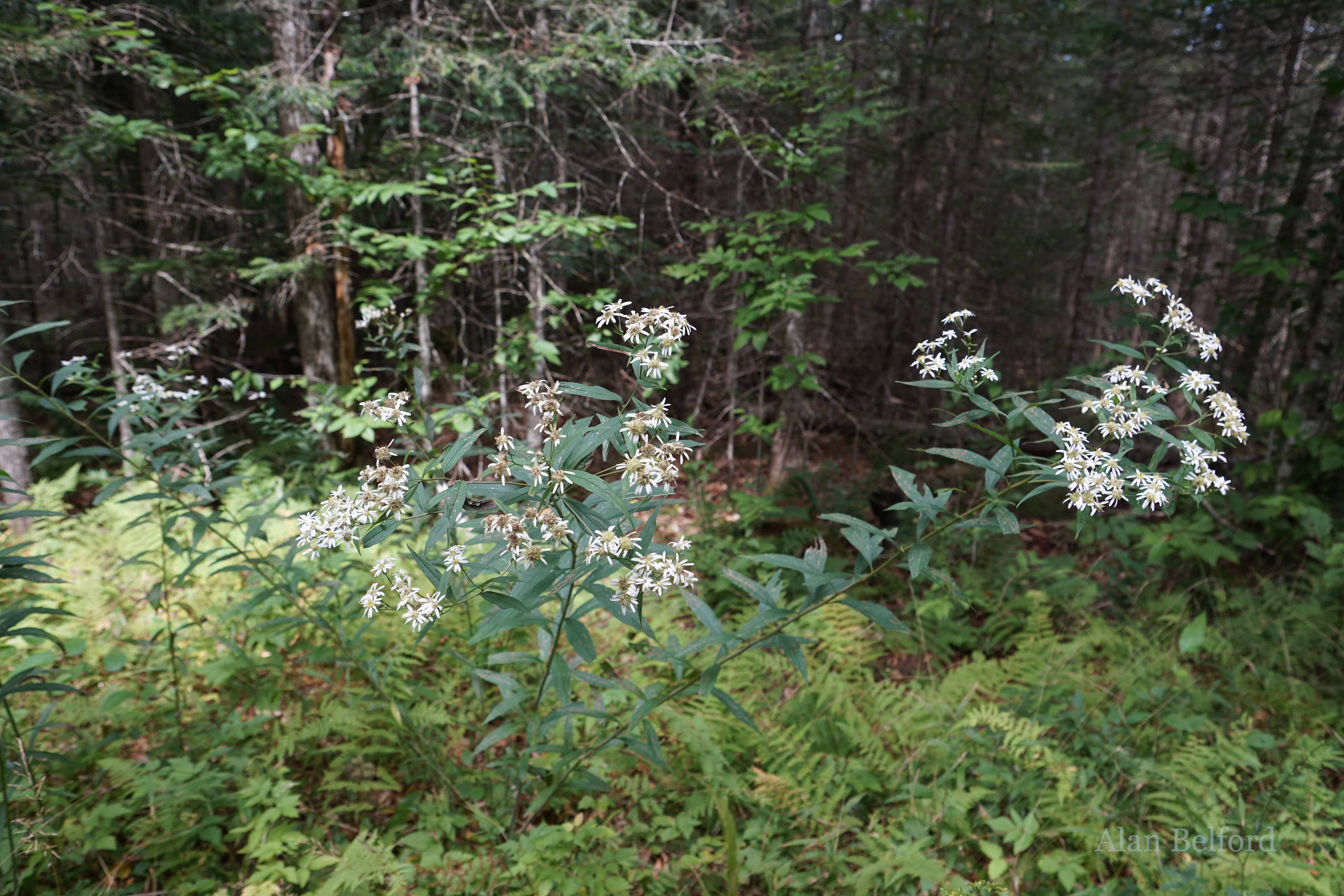
Botanizing and lunch!
As a result, my plant list was soon expanding with new names like New York aster, flat-topped aster, pearly everlasting, closed gentian, Canada goldenrod, and lance-leaved goldenrod. And so I continued botanizing and birding for a couple miles, and explored the small backcountry campsites part way along the trail before deciding it was time to turn around. Of course, I continued to explore on my way back to the car, spooking a Ruffed Grouse from the side of the trail not long after I turned, and bringing my final tally to five species of woodpeckers and between ten and fifteen Swainson’s Thrushes – the trail seemed to be full of them!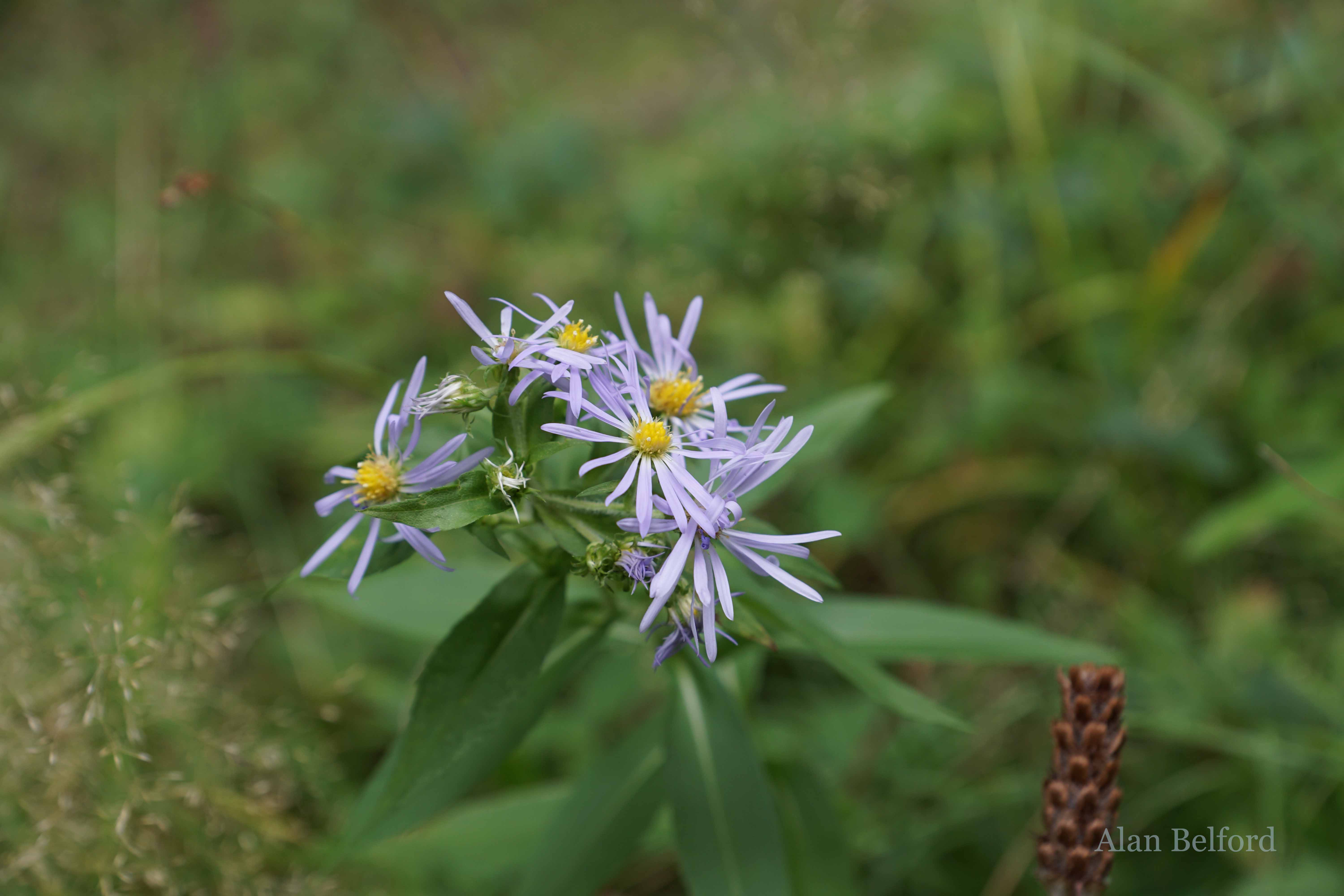
I had snacked and drank water while I hiked, but I was ready for something more substantial (I’m always hungry early for lunch on days I get out early) when I returned to the car. But buoyed by another snack, I elected to push lunch off a bit and head up the road to Newcomb. After a brief stop at the Adirondack Interpretive Center – complete with a similar mix of bird species and excellent looks at both Black-and-white and Chestnut-sided Warblers – I headed to Rich Lake Beach where I sat on a rock in the shade and enjoyed a satisfying lunch and the peace that comes after an early departure in search of birds.
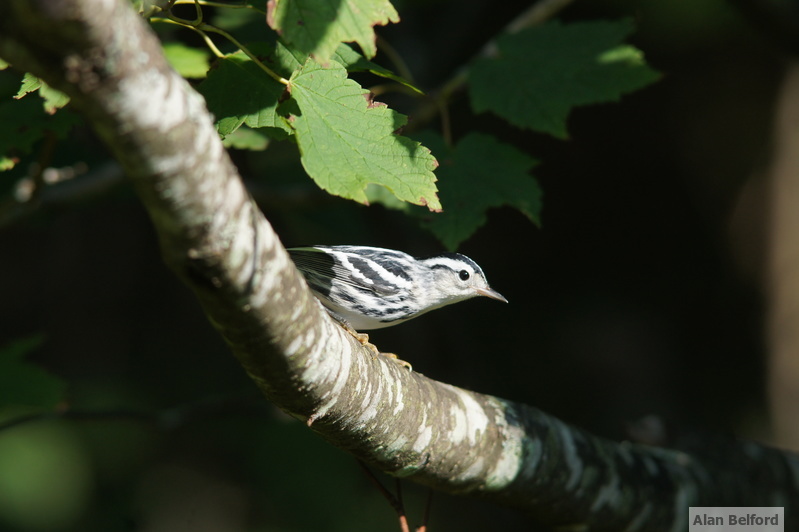
I felt as though I could have stayed there the rest of the day – and the water beckoned me to jump in. But I knew I had other things to do, and so I somewhat reluctantly left to head toward home, planning in my mind that I would be back soon.
Late summer and early fall bring with them fabulous birding, botanizing, and outdoor opportunities. Plan your trip today by checking out our dining and lodging pages. And if you are looking for a place to pitch your tent, visit our camping page while you’re at it.
